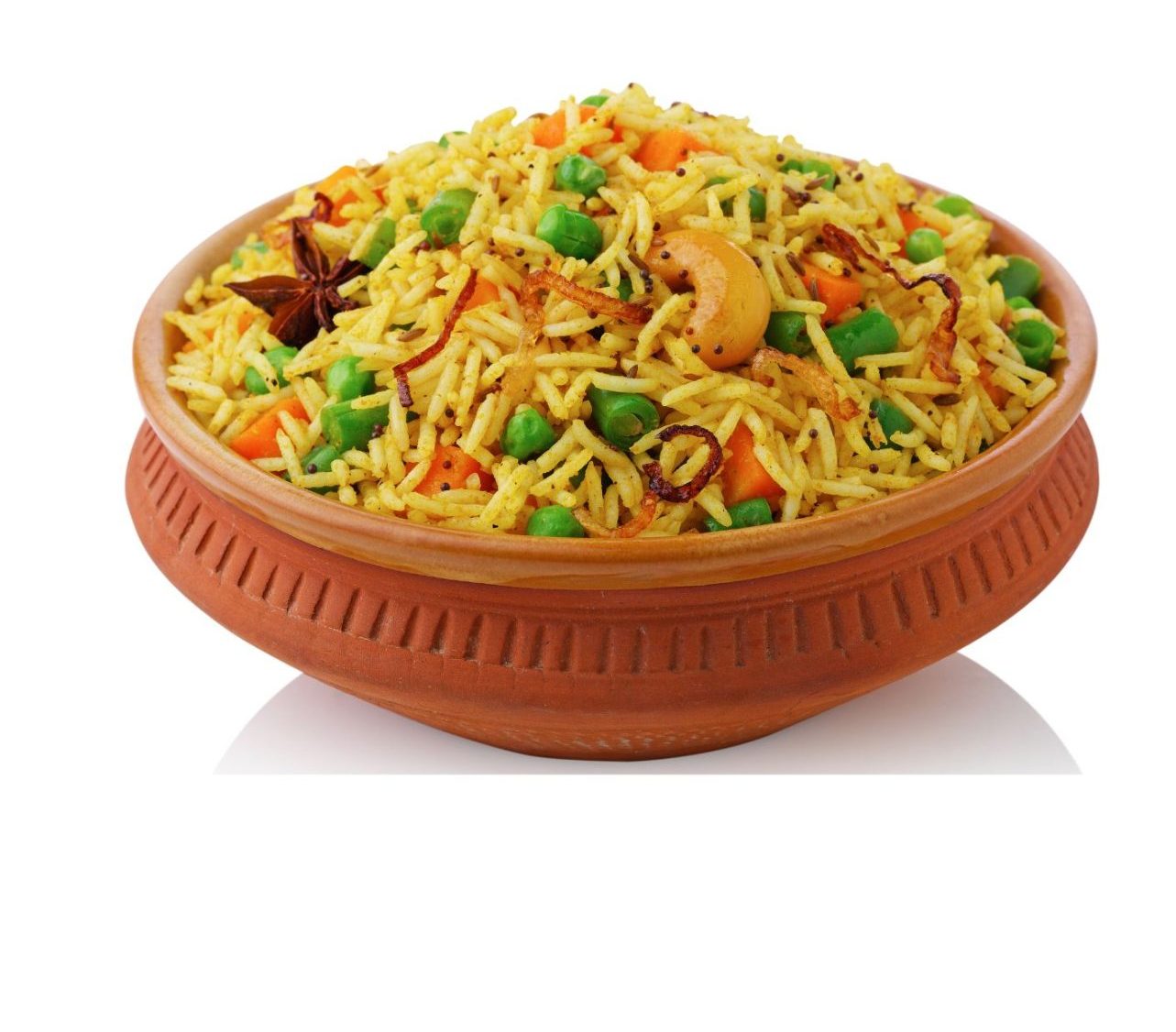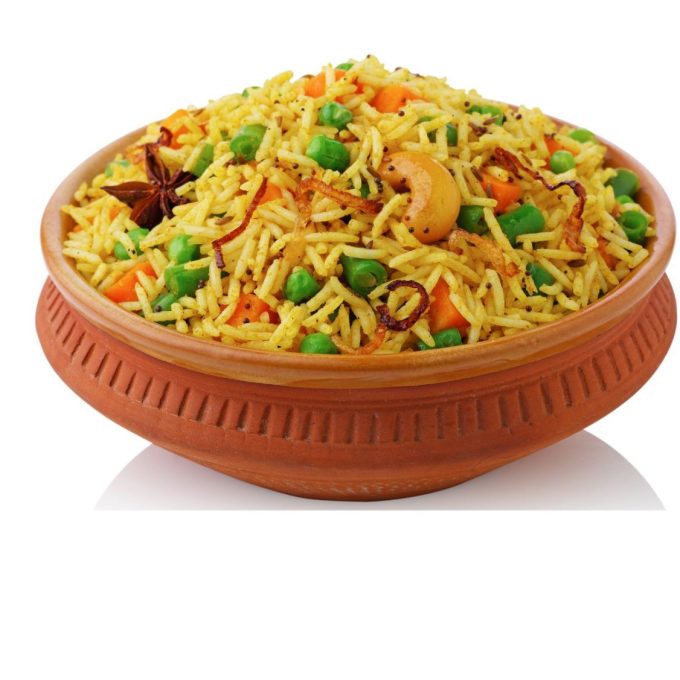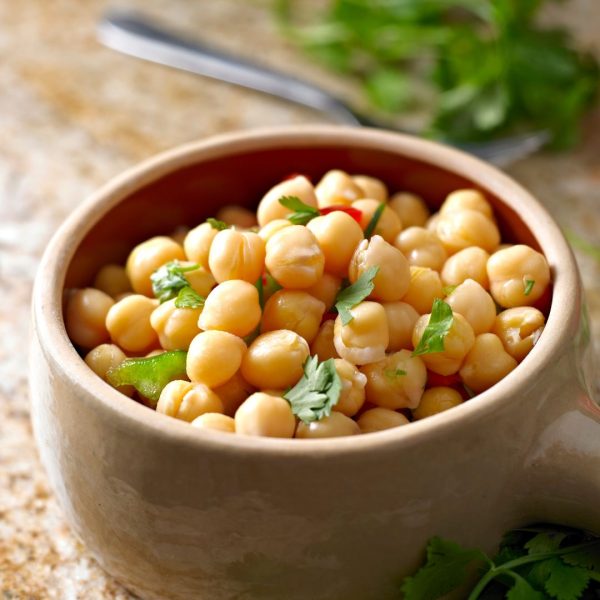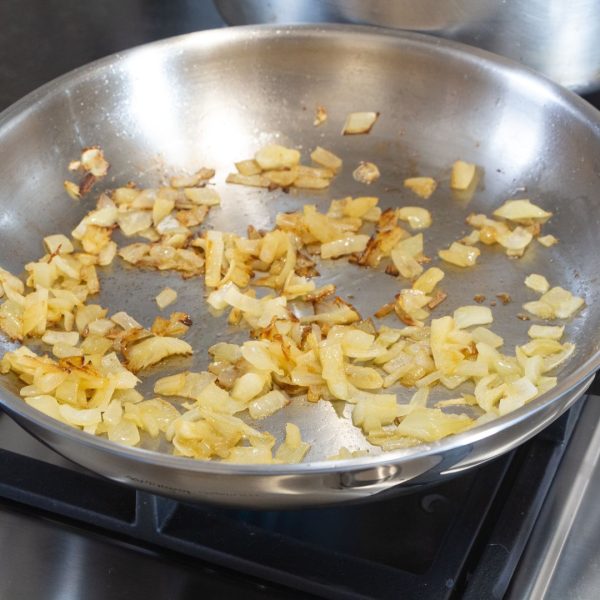Vegetable Biryani Rice

Rice is a fantastic pantry staple. Many people select rice since we may present it in several ways and cooking it is simple. Almost every culture, in my opinion, has a rice dish. Fried rice, risotto, Tahdig rice—the list is endless. Basmati, Jasmine, brown rice, black rice, red rice, and wild rice are different kinds of rice but there’s more. My favourite kind of rice for this dish is the long-grain Basmati. We use it in a lot of meals at home because of its unique scent and fluffy texture, which make it ideal for absorbing flavours.
What appeals to me so much about this recipe is its nutritious worth. I have added some chickpeas and peas to this dish to sneak in more protein and give it a heartier feel. Chickpeas and peas complement each other perfectly. When mixed, these ingredients provide the dish a pleasing texture and flavour contrast, boosting its nutritional value. A great addition to any meal are peas because of their colour and subtle sweetness, but chickpeas are great because of the essential nutrients they provide.
Vegetable Biryani Rice

Ingredients
- 2 tablespoons olive oil
- 1 brown onion diced
- 3 cloves garlic crushed
- 4 knob ginger grated
- 1 red capsicum diced
- 1 large carrot diced
- 1 tablespoon garam masala
- 1 teaspoon chili powder (optional)
- 1 teaspoon turmeric powder
- 1/2 teaspoon ground cinnamon
- 1/2 teaspoon salt
- 2 cups basmati rice rinsed
- 1 cup green peas frozen
- 4 cups vegetable stock
- 400 grams chickpeas cooked
- 1 cup green beans chopped
- 2 bay leaves
- 1/2 cup coriander fresh
- 50 grams dry roasted cashew nuts
Method
- Heat oil in a large fry pan and sauté onion until translucent then add minced garlic and grated ginger.
- Add to fry pan capsicum and carrots and cook for about four minutes or until slightly softened.
- Add the spices and cook another minute or two.
- Add the rice, vegetable stock, chickpeas, peas, and bay leaves, put the lid on, and let simmer until cooked and the water has evaporated.
- Uncover the rice, fluff it up with a fork, and top it with fresh coriander and roasted cashews
Recipe Notes
Equipment:
- Large deep saucepan with lid
- Wooden spoon



Biryani is a special dish that many people love. It comes from the Indian subcontinent and is known for its rich smell, bright colours, and layers of flavour. The key to making great biryani is using good rice. Basmati rice is often the best choice because it has long grains and a nice aroma. This rice soaks up the spices and stays fluffy, with each grain staying separate.
Using homemade vegetable stock is another way to add more nutrients and boost the flavour. The stock, made from vegetables like carrots, onions, celery, and herbs, gives the rice a deep flavour that is comforting and wholesome. It’s an easy way to make the dish taste even better, turning it from a simple rice meal into something really special. The vegetable stock also keeps the biryani moist and full of flavour without needing extra fats or oils.
Biryani is usually made with layers of marinated meat, rice, and spices, which are cooked slowly so the flavours mix well. But this vegan version is just as satisfying, with chickpeas and peas taking the place of meat that you’ll just love. The spices used in biryani, like cumin, coriander, turmeric, and garam masala, are aromatic and also have health benefits. For example, turmeric helps with inflammation, and cumin helps with digestion and boosts the immune system.
The great thing about Biryani is that you can easily change the recipe to your liking. You can add other vegetables like carrots, cauliflower, or even paneer (Indian cottage cheese) for extra richness. If you like your food spicy, you can add green chilies or a pinch of red chili powder. If you prefer a milder taste, just use fewer spices or skip the chilies.
One of the best parts of cooking Biryani is the smell that fills your kitchen as the rice cooks. The scent of the spices mixed with the fragrant Basmati rice is enough to make anyone hungry. If you use saffron, it adds a light floral note and a beautiful golden colour to the dish, making it look as good as it tastes.
Serving Biryani can be simple or fancy, depending on what you like. It’s usually served with raita, a cool yogurt-based side dish that balances the spices. A simple cucumber and mint raita go well with Biryani, giving a refreshing contrast to the rich and flavourful dish. You can also serve it with pickles or a fresh salad for extra crunch and freshness.
Leftover Biryani is a treat. The flavours get even better the next day, making it perfect for a quick lunch or dinner. You can also use the leftovers as a filling for wraps or stuffed peppers. Just reheat the biryani in the microwave or on the stovetop with a little water or stock to bring it back to life.
It is more than just a dish; it’s a celebration of flavours, cultures, and traditions. Whether you’re cooking it for a special occasion or a simple family dinner, it’s a dish that brings people together. The process of layering the rice, adding the spices, and slow-cooking it to perfection is a labour of love, and the end result is always worth it.
So the next time you’re looking for a quick, easy, and delicious meal, give this rice recipe a try—you won’t regret it!
Frequently Asked Questions
Can I use leftover rice to make this Biryani?
As the dish is cooked using the rice absorption method we suggest saving your leftover rice for another dish, like fried rice. This rice dish is best made with raw rice so it cooks in the stock and the various vegetables and flavours, making it more delicious.
How can I prevent the rice from sticking to the bottom of the pot while cooking biryani?
To prevent sticking, use a non stick pan and olive oil to cook the vegetables on. This creates a barrier and adds a unique texture to the dish. Cooking on low heat and using a heavy-bottomed pot also helps.
Can I add dried fruits or nuts to this Biryani?
Absolutely! Adding raisins, cashews, or almonds can enhance the richness of the biryani. Lightly toast the nuts in ghee or oil before adding them for extra flavour.
Can I use a pressure cooker to make this biryani?
Yes, be careful with the timing. Using a pressure cooker can cut down on cooking time, but it also risks overcooking the rice. Use the pressure cooker only for the initial cooking of the rice and vegetables, and finish the layering and steaming process on low heat without the pressure.
What are some non-traditional vegetables that work well in Biryani?
You can experiment with non-traditional vegetables like artichokes, asparagus, or even roasted butternut squash. These add interesting textures and flavours, giving your biryani a unique twist.
Is this freezable? I love to batch cook.
Yes absolutely, simply freeze in an air tight container, preferably glass and reheat in the microwave or in a frypan on the cooktop. Ideally thaw before heating.

